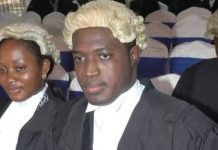In 1894 a juridical instrument known as Gambia Protectorate Ordinance was introduced. It provided for the exercise of powers by Commissioners and Native authorities in the protectorate. The Colony and the protectorate were to be under the Crown. The protectorate was divided into districts. The Administrator or Governor representing the Crown had the power to “alter the boundaries of any district and may dismiss any head chief and appoint a successor.” The role of a chief was made evident. He was “responsible to the administrator for the good order of his district …” He was also “the President of the native court of such districts.” Native was defined in the ordinance as “all persons resident in the protected territories other than the subjects of a civilised power.” This is the origin of Chiefs and the district tribunal under the colonial monarchy. Now that the Gambia is a Republic, sovereignty resides in the people. Section 1 Subsection (2) of the Constitution reads “The Sovereignty of The Gambia resides in the people of The Gambia from whom all organs of government derive their authority and in whose name and for whose welfare and prosperity the powers of government are to be exercised in accordance with this Constitution Section 120 also establishes the Independence of the judiciary. Hence under the Republic Chiefs cannot be heads of tribunals and be under the executive at the same time. Hence, the real subject of discussion should be the role of Chiefs under the Republic. The role cannot be the same as that under a monarchy. There is definite need for constitutional and legal reform to define the role of chief under a Republic. ]]>
© 2019 Foroyaa Newspaper - Site by DigiTech Solutions


















